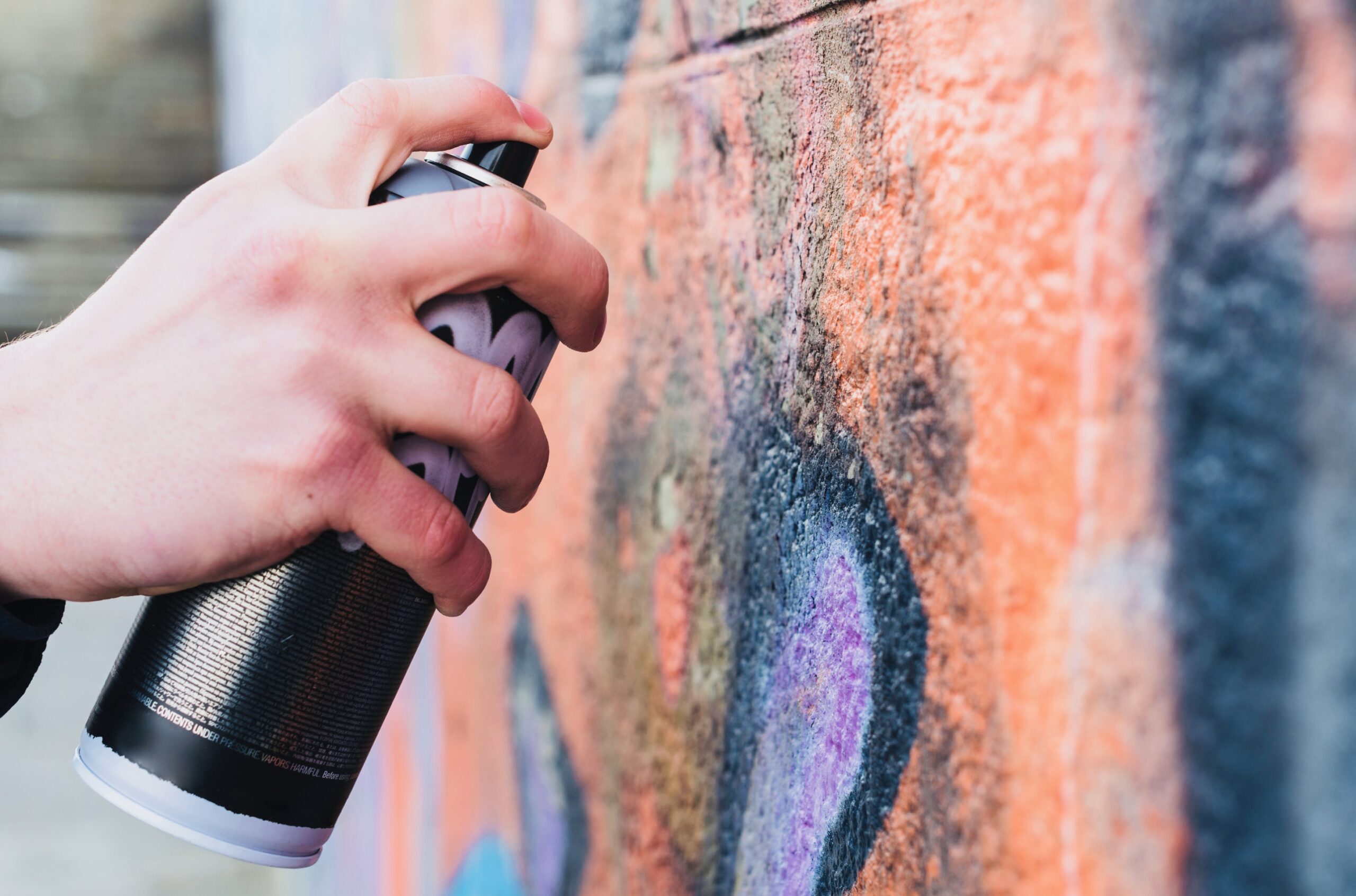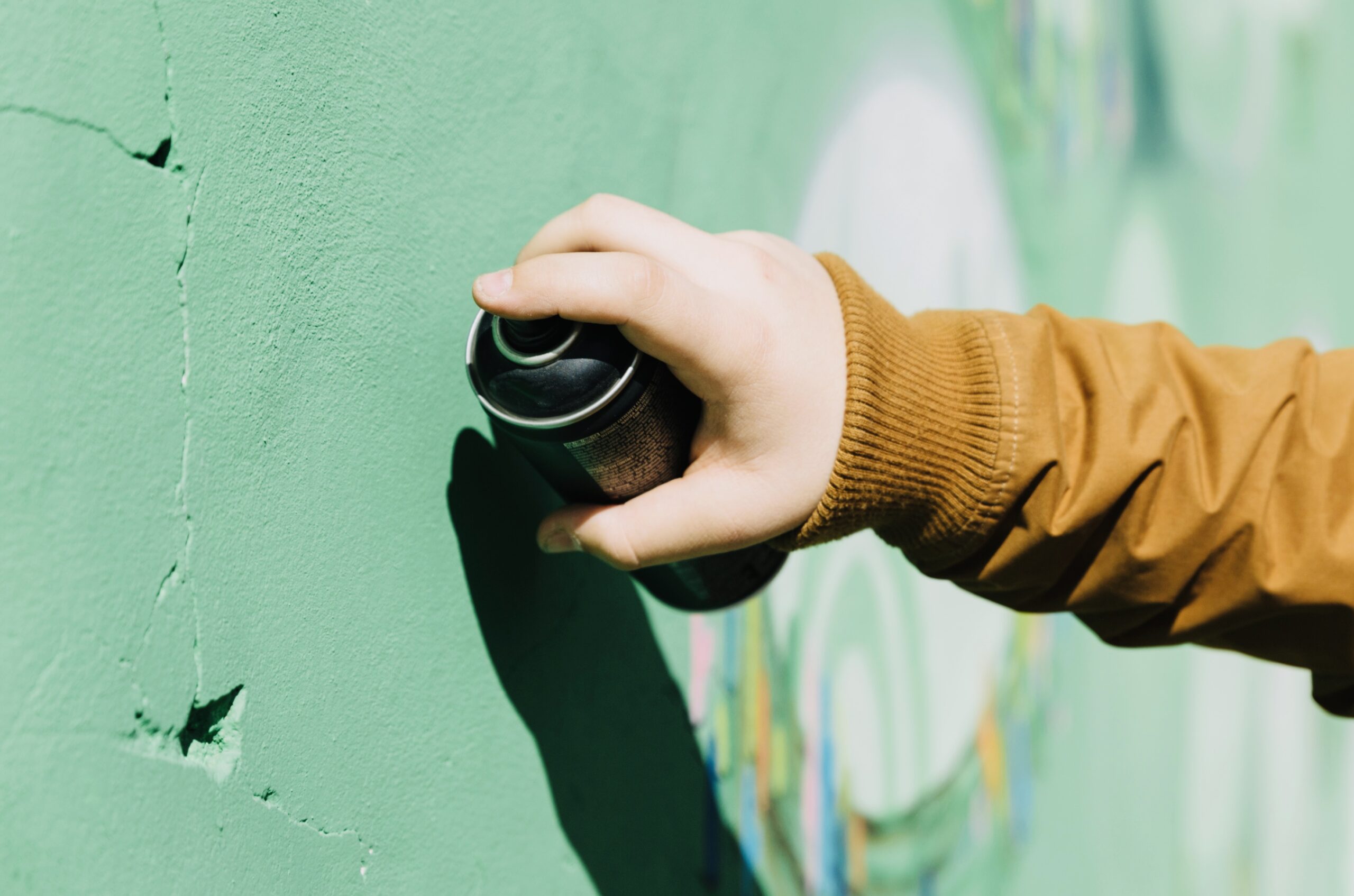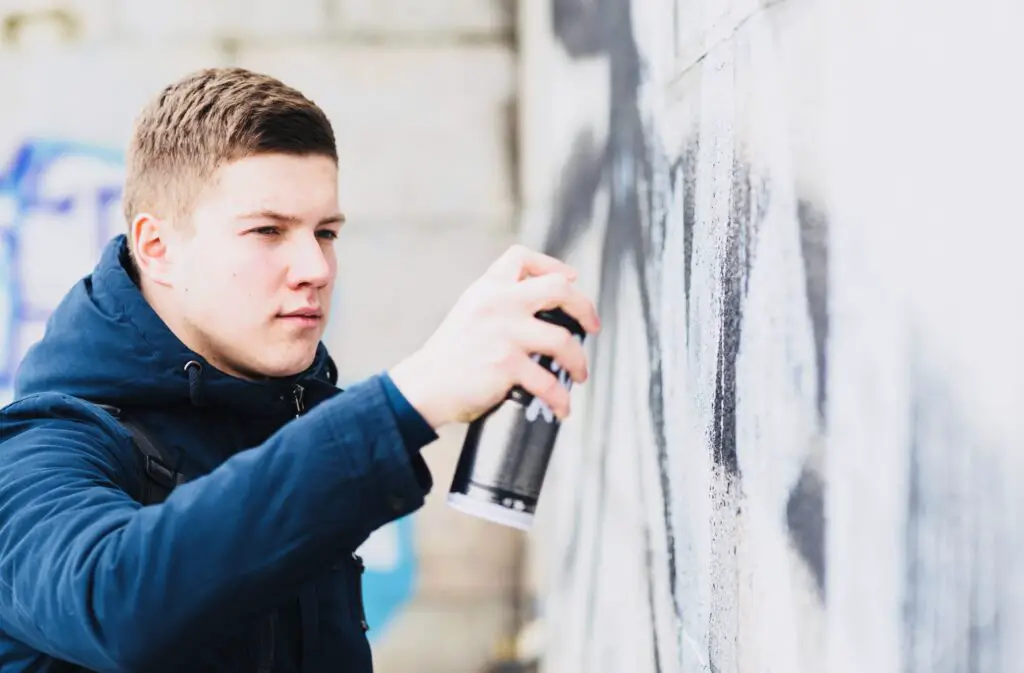The Master Art Of How to Fix Spray Paint Wrinkling: A Comprehensive Guide
Spray painting is an exciting way to give a fresh look to various surfaces, but shits happen! Wrinkling is frustrating. If you’ve noticed wrinkles in your spray-painted finish, don’t worry—this common problem has solutions.

In this comprehensive guide, we’ll walk you through the steps of How to fix spray paint wrinkling. We will ensure a smooth and professional-looking finish. Whether you’re a DIY enthusiast or tackling a home improvement project, understanding how to address this issue is key to achieving the desired results.
Why Does Spray Paint Wrinkle?
Before diving into the solutions, it’s essential to understand why spray paint wrinkling occurs.
Common reasons include:
- Improper Application: Applying too much paint at once or holding the spray too close to the surface can lead to wrinkling.
- Incompatible Products: Using incompatible paint products, such as applying an enamel paint over a not fully cured primer, can result in wrinkling.
- Improper Temperature and Humidity: Spray painting in extreme temperatures or high humidity levels can affect the drying process, causing wrinkles.
Now, let’s explore the steps to fix spray paint wrinkling:
Step 1: Assess the Wrinkled Surface
Assess the wrinkled surface to determine the extent of the issue:
- If the wrinkles are minimal, you may be able to fix them without removing the entire coat of paint
- If the wrinkles are severe, you might need to consider repainting the surface
Step 2: Sanding the Wrinkled Area
For minor wrinkles, use fine-grit sandpaper to gently sand the affected area. Sand in a circular motion until the wrinkles are smoothed out. Be cautious not to sand too aggressively, as this can damage the underlying surface.
Step 3: Clean and Prime
After sanding, thoroughly clean the surface to remove any dust or debris. Once cleaned, apply an appropriate primer compatible with both the surface and the type of spray paint you’re using. Allow the primer to dry completely before proceeding to the next step.
Step 4: Repaint the Surface
Once the primer has dried, repaint the surface using the correct spray paint. Follow the manufacturer’s recommendations for application distance, drying time, and environmental conditions. Apply thin, even coats, allowing each coat to dry completely before adding the next layer.
Step 5: Adjusting Application Technique
If the wrinkling persists, consider adjusting your spray painting technique. Be sure you are maintaining the recommended distance from the surface, applying light and even coats, and allowing sufficient drying time between coats.
Step 6: Controlling Environmental Factors
Temperature and humidity issues are important. Aim to spray paint in moderate temperatures and humidity levels. Avoid painting in direct sunlight or extreme conditions that can interfere with the drying process
Step 7: Sanding and Repainting (For Severe Wrinkling)
If the wrinkles are extensive, you may need to sand the entire surface to remove the existing paint. Once sanded, clean the surface, apply a suitable primer, and repaint following the correct application techniques.
Step 8: Prevention for Future Projects
To prevent spray paint wrinkling in future projects:
- Read and follow the manufacturer’s instructions on paint products.
- Test your spray painting technique on a small, inconspicuous area before tackling the entire surface.
- Ensure compatibility between primer and paint products.
- Check environmental conditions, such as temperature and humidity, before spray painting.
Understanding Paint Compatibility
Ensuring compatibility between different paint products is crucial for a successful spray painting project. Before starting any painting job, double-check that the primer and spray paint you plan to use are designed to work together. Some paints may not adhere properly if applied over incompatible products, leading to issues such as wrinkling.

Checking for Underlying Issues
Wrinkling can sometimes be a symptom of underlying issues, such as moisture or contaminants on the surface. Before repainting, thoroughly clean the surface and ensure it is completely dry. If moisture is a concern, address the source of the moisture and allow the surface to dry thoroughly before proceeding.
Experimenting with Paint Brands
If you consistently encounter wrinkling issues with a specific brand of spray paint, consider experimenting with different brands. Some formulations may react better with certain surfaces or primers. Conduct small-scale tests to determine the most compatible paint for your project.
Advanced Techniques
For surfaces with stubborn wrinkles, advanced sanding techniques may be necessary. Consider using progressively finer grits of sandpaper to achieve a smoother surface. This not only helps eliminate wrinkles but also contributes to a polished and professional finish.
Sealing the Final Coat
After achieving the desired finish, consider applying a clear sealer or topcoat to protect the paint and enhance its durability. A clear coat can provide an extra layer of protection against environmental factors, reducing the risk of future issues like wrinkling.
Consultation with Paint Professionals
If, despite your efforts, wrinkling issues persist, it might be beneficial to consult with paint professionals or experts at your local paint store. They can offer insights into specific challenges related to your project, recommend specialized products, or provide additional tips for achieving a flawless finish.
FAQ Section: Addressing Common Concerns
Q1: Why does spray paint wrinkling happen in the first place?
A1: Spray paint wrinkling typically occurs due to factors like improper application, incompatible paint products, and unfavorable environmental conditions. Applying too much paint at once, using incompatible primers and paints, or working in extreme temperatures can lead to this issue.
Q2: Can I fix minor wrinkles without repainting the entire surface?
A2: Yes, for minor wrinkles, you can often fix the issue without repainting the entire surface. Gently sand the affected area, clean it thoroughly, apply an appropriate primer, and then repaint following the correct application techniques.
Q3: What if the wrinkles are extensive and sanding is not enough?
A3: In cases of severe wrinkling, you may need to sand the entire surface to remove the existing paint. After sanding, clean the surface, apply a suitable primer, and repaint the following recommended techniques.
Q4: How can I prevent spray paint wrinkling in future projects?
A4: To prevent spray paint wrinkling, ensure compatibility between paint products, follow recommended application techniques, and be mindful of environmental conditions.
Q5: Can I use an adhesion promoter for all surfaces?
A5: Adhesion promoters are especially useful for challenging surfaces like plastic or metal. However, it’s better to follow the manufacturer’s guidelines and only use them on surfaces where they are recommended to avoid adverse reactions.
Q6: Are there specific techniques for spray painting in high humidity?
A6: In high humidity, consider spraying in shorter bursts and maintaining a slightly greater distance from the surface. This helps prevent the paint from drying too quickly, minimizing the risk of wrinkling.
Q7: Should I seal the final coat with a clear coat?
A7: Sealing the final coat with a clear coat can enhance durability and protect against environmental factors. It’s especially beneficial in high-traffic or outdoor areas. Choose a clear coat compatible with your spray paint for optimal results.
Q8: Can I mix different brands of spray paint and primer?
A8: It’s generally advisable to stick with the same brand for both spray paint and primer to ensure compatibility. Mixing different brands may lead to issues such as wrinkling or poor adhesion.
Q9: What’s the role of sanding in fixing spray paint wrinkling?
A9: Sanding helps smooth out wrinkles and prepares the surface for repainting. It removes imperfections and creates a more even substrate for the new paint layers, contributing to a professional finish.
Q10: When is it time to seek professional assistance?
A10: If DIY efforts don’t resolve the wrinkling issue or if you encounter persistent challenges, seeking professional assistance is advisable. Paint professionals can provide insights, identify specific issues, and recommend specialized solutions.
Conclusion: Mastering the Art of How to fix spray paint wrinkling
In your journey through the world of spray painting, encountering challenges like wrinkling is a part of the learning process. Our FAQ section aims to identify common concerns and provide additional guidance for navigating these challenges.
Remember, each project contributes to your expertise, and by understanding the intricacies of spray paint, you’ll continue to refine your skills and achieve outstanding results in your DIY endeavors. Enjoy the creative and transformative journey of mastering the art of spray painting.
Happy Painting!

